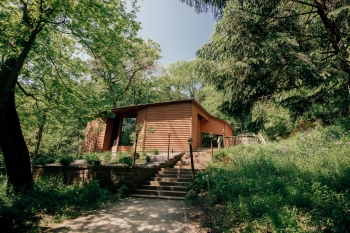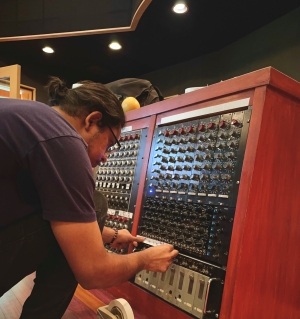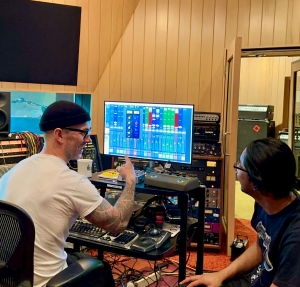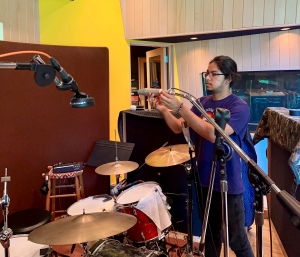I’ve always dreamed of being part of a recording studio. Not just making music, but working behind the scenes where sounds are beautifully crafted. This summer, that dream became reality at Pachyderm Studios, Minnesota, where I’m working as an Audio Engineering Intern. Coming from Nepal as an international student, it still feels surreal to be here, learning in a place with such rich musical history.
It all started with a cold email to Nick Tveitbakk, Pachyderm’s Chief Engineer and now my supervisor. I shared my passion for music and my goal of building audio plugins to help musicians and sound engineers. To my delight, our conversation instantly clicked, and I was offered the opportunity.
Pachyderm isn’t just any studio, it’s a residential retreat hidden deep in the Minnesota woods. Driving through winding roads and suddenly arriving at this creative haven felt like discovering a hidden gem.

Even more surreal? Knowing that Nirvana recorded In Utero here 32 years ago. As a huge fan, standing in the same room where Heart-Shaped Box and All Apologies were recorded was a pinch-me moment for me.
My first lesson on the job? How to make good coffee. In studio culture, coffee fuels the late nights, long sessions, and sparks of creativity. Keeping the pot warm is very important to keep the creative energy flowing.
From day one, I was hands-on. Nick toured me through the studio, the gears, and what I’d be responsible for. Within hours, I was already helping in a recording session, making sure musicians felt comfortable and had what they needed. That’s when I realized, a studio isn’t just a place to record; it’s a creative space where art is brought to life, and it’s my job to help that creative environment.
The control room felt like a spaceship cockpit. At the center is the 48-Channel API Discrete console (behind me in the header photo), one of only four in the world and also …very expensive. Surrounding it are racks of vintage preamps and processors, each with knobs that can make or break a recording with the slightest twist. It was overwhelming at first, but with Nick’s 27 years of experience guiding me, I couldn’t ask for a better mentor. I’m learning every day not just how to use the gear, but why it matters.

What excites me the most is the intersection of audio engineering and technology. As a computer science student, I’m passionate about building audio plugins; tools that process sound and help artists shape their mix. Watching Nick work in the DAW (Digital Audio Workstation), applying a combination of analog hardware and digital plugins to craft a mix, has been incredibly inspiring.

I’m also learning the technical nuances of signal chains: how microphones connect to preamps, into compressors, routed through the console, and then converted digitally into the DAW. Every step in that chain shapes the final sound, and that’s the level of detail I hope to bring into the plugins I want to develop.
One of the most technical lessons has been mic placement. Every session is different, every setup is intentional. I didn’t realize how much just an inch or two can change the entire sound. Sometimes, you have 15 minutes to set up, using microphones that can cost over $30,000. It’s high-pressure, but that’s exactly what makes it so rewarding. I’m learning the importance of patience, precision, and showing up with the focus and respect the craft deserves.

This experience has been nothing short of a dream come true. I’m grateful to Nick for his mentorship in sharing his expertise. I also want to thank Berry Career Institute (BCI) for making this journey possible.
At Pachyderm, I’m learning not just to record music, but to help make it timeless, and I can’t wait to share that experience at Cornell.